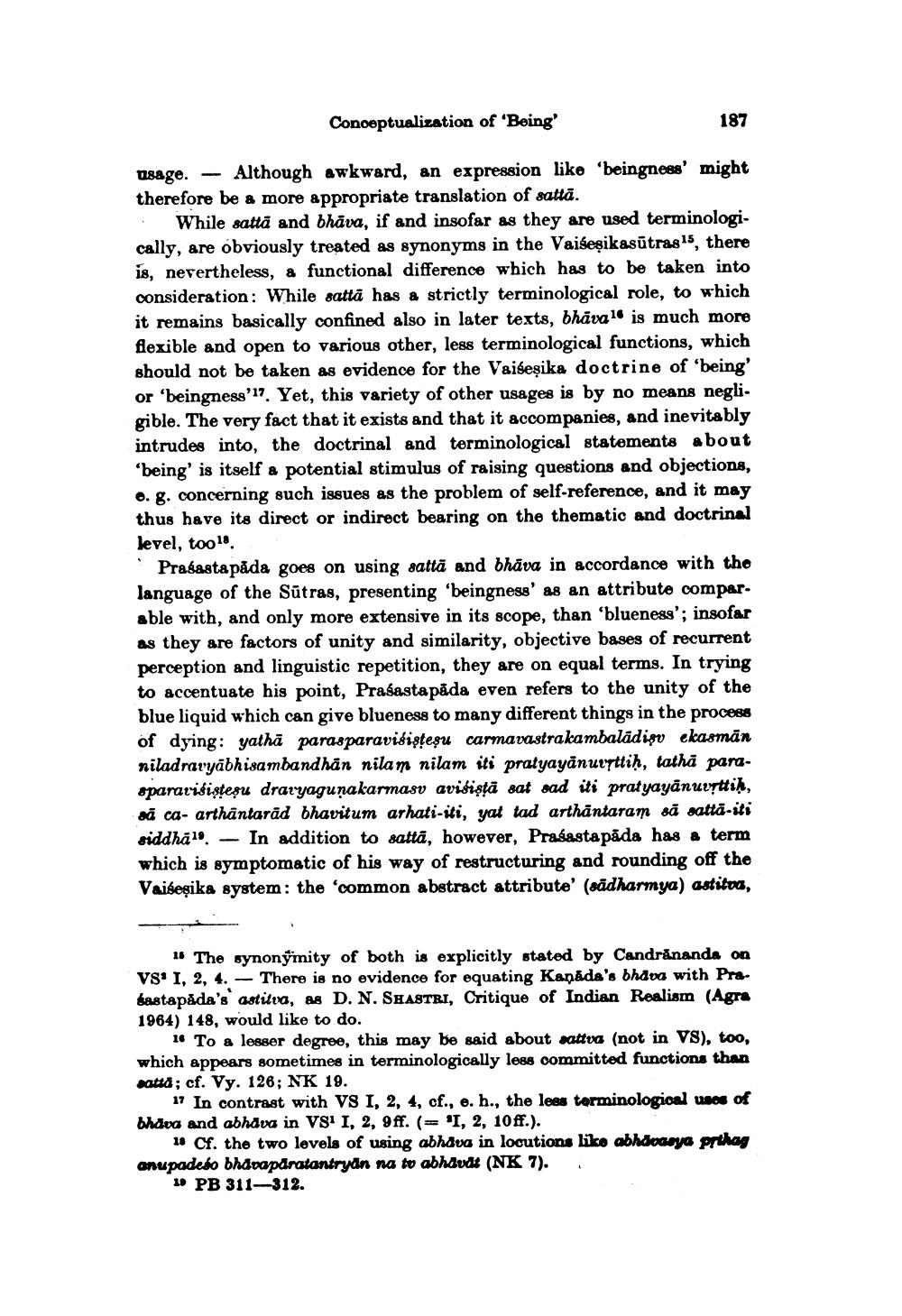________________
Conceptualization of 'Being'
187
usage. - Although awkward, an expression like beingness' might therefore be a more appropriate translation of satta.
While sattā and bhāva, if and insofar as they are used terminologi. cally, are obviously treated as synonyms in the Vaiseşikasūtras15, there is, nevertheless, a functional difference which has to be taken into consideration: While satta has a strictly terminological role, to which it remains basically confined also in later texts, bhavale is much more flexible and open to various other, less terminological functions, which should not be taken as evidence for the Vaiseșika doctrine of being' or 'beingness'17. Yet, this variety of other usages is by no means negli. gible. The very fact that it exists and that it accompanies, and inevitably intrudes into, the doctrinal and terminological statements about 'being' is itself a potential stimulus of raising questions and objections, 6. g. concerning such issues as the problem of self-reference, and it may thus have its direct or indirect bearing on the thematic and doctrinal level, too 18.
Prasasta pada goes on using sattā and bhäva in accordance with the language of the Sūtras, presenting 'beingness' as an attribute compar. able with, and only more extensive in its scope, than 'blueness'; insofar as they are factors of unity and similarity, objective bases of recurrent perception and linguistic repetition, they are on equal terms. In trying to accentuate his point, Praśasta påda even refers to the unity of the blue liquid which can give blueness to many different things in the process of dying: yathā parasparavišişteşu carmavastrakambalādigv ekasmān niladravyäbhisambandhän nilam nilam iti pratyayānuvyttiḥ, tathi parasparariţişteşu draryagunakarmasv avišiştā sat sad iti pratyayānuvyttiḥ, să ca- arthäntarād bhavitum arhati-iti, yat tad arthantaram să satta-iti siddha. - In addition to satta, however, Prasasta pada has a term which is symptomatic of his way of restructuring and rounding off the Vaiseșika system: the common abstract attribute' (sādharmya) astitoa,
" The synonymity of both is explicitly stated by Candránanda on VS' I, 2, 4. - There is no evidence for equating Kanada's bhava with Prebastapäda's Astitva, as D. N. SHASTRI, Critique of Indian Realism (Agra 1964) 148, would like to do.
16 To a lesser degree, this may be said about sattva (not in Vs), too, which appears sometimes in terminologically less committed functions than atti; cf. Vy. 126; NK 19.
17 In contrast with VS I, 2, 4, cf., e. h., the less terminological was of bhava and abhava in VS I, 2, 9ff. (= 'I, 2, 10 ff.).
1 Cf. the two levels of using abhäva in locutions liko abhdaasya prihag anupadeso bhdvopdratantryan na to abhavde (NK 7).
10 PB 311-312.




